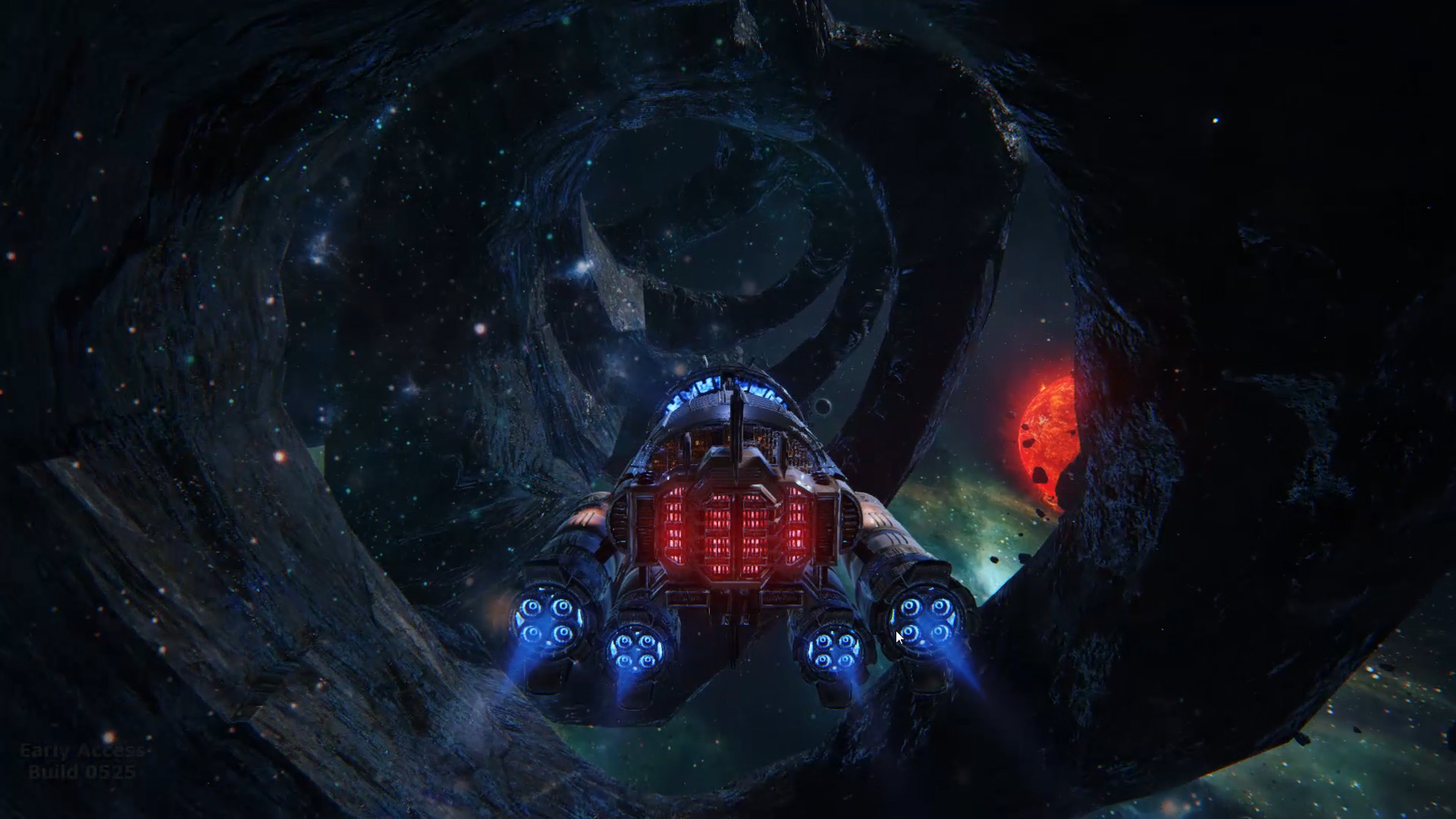On the open-space range.
Development Director Ben Jones pitched Into the Stars to me in a very straightforward and simple way, saying of his Fugitive-Games four-man-team, "We'd all made military shooters for years and wanted to get back to the kind of game that got us into wanting to make games. The pitch is: It's Oregon Trail meets FTL." That's a bold statement, naming what is one of the only truly successful educational games in history, and pairing it with the recent micro-management indie darling. It's also an accurate description of the game.
In Into the Stars you do everything from the Captain's chair. "In Star Trek Picard doesn't usually go down to the planet, he has an away team for that," Jones says, and in your position as Captain one of your first jobs is to pick a capable crew and build your ship as best you can to help save the human race. Humanity has been attacked by an alien race known as The Scorn, and it's your job as captain of a colony ship, to get as many humans to their new home across the galaxy as possible.
Space exploration means guiding your colony ship from planet to planet, harvesting resources and availing yourself of opportunities on each (it's like the mining missions in Mass Effect 2, but with occasional opportunities for diplomacy, and a mining mini-game). And it's not dissimilar to killing a bison in the inspirational Oregon Trail. Sure, you can mine as long as you want, but your lander can only bring so many resources back to the ship, and the more you mine, the fewer resources the planet has to offer.
You can't tarry in any one system too long, or the Scorn will track you down. This instigates combat, where you have to place some of your crew in defensive and offensive positions. In the playthrough Ben ran me through, we got terribly unlucky and ended up facing—before we even left the first quadrant of the game—a pair of drones and an enemy attack ship. In combat, you have to pay attention to enemy shield and weapon color, matching your shields to their weapon color—which nullifies the attack—and changing your weapons to be different to do maximum damage to the enemy. During the encounter, our shields were destroyed and the crewman manning them died. Had Ben not cheated and used console commands to give us extra resources, I suspect our game would have ended right there.

That crew death cost us as Into the Stars features a permadeath system, and any character that dies takes all their experience with them; though encounters on planets, with derelict colony ships you find, or in other encounters, it may be possible to find new crew members, but their stats may not be what you need. Your characters level with each task you give them, and outside of away team missions or combat, since you are running what amounts to a free-floating living city in space, a lot of various problems arise.
At one point, we had to place one of our competent command staff into the population to stop street gangs from rioting. Of course, while this is going on, if attacked or encountering another situation, that crew member is not available to ply their expertise until the problem that he or she has been assigned has been completed. This also came up during combat, in an early encounter with some aliens on a planet, several of our crew were wounded. There wasn't enough time to put them into sickbay, where it takes time to recover, so Ben put the wounded crew straight into combat, where that contributed to that one member's death. On the upside, when you assign crew members tasks, and they perform them successfully, they level up, raising their stats which increases the ship's general survivability.
Into the Stars looks fantastic and plays intuitively and cleanly, a tribute to Jones and his team's pedigree as professional developers who had previously worked at Capcom, DICE, and SCEA. The game wears more than just a little of its influences on its sleeve with 2001, Firefly, and especially Mass Effect showing through in the design (and in the music, with Mass Effect composer Jack Wall working on Into the Stars score).
The game has a sheen of polish that is fairly unprecedented for a team so small, and Jones told me they've built the game using Unreal Engine 4's Blueprints—which makes game development highly accessible with a node-based graphic user interface. It's the first game I've seen built using the system (that I know of) and it shows off the power and accessibility of the engine.
Into the Stars is shaping up as a great spaceship captain sim/exploration/management game for PC and Mac. It enters Steam Early Access this summer for $20, where Jones is excited to see how player feedback will help them refine and strengthen the game.










